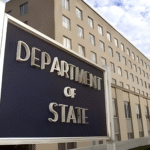The November U.S. Visa Bulletin, issued by the Department of State, indicates a period of relative stability with no significant changes in the cut-off dates for obtaining or filing a Green Card across most employment-based categories. This lack of forward movement means that current backlogs and lengthy waiting periods for many applicants—particularly in the oversubscribed categories—are set to continue.
For the Employment-Based First Preference (EB-1) category, the situation remains highly favorable. Both the Final Action Date (when an immigrant visa can be granted) and the Date for Filing (when an applicant inside the U.S. can submit Form I-485) are “Current.”
This allows applicants already in the U.S. to concurrently file their Green Card application (I-485) along with their immigrant petition (I-140) in November. However, applicants outside the U.S., while not restricted by a cut-off date, are cautioned that existing backlogs at U.S. Embassies and Consulates may still result in a substantial wait for their immigrant visa interview.
In the Employment-Based Second (EB-2) and Third (EB-3) Preference categories, the cut-off dates for both filing and final action showed no major advancement.For EB-2 applicants, those outside the U.S. with a Priority Date earlier than December 1, 2023, may receive an interview, while applicants inside the U.S. with a Priority Date earlier than July 15, 2024, can file their I-485.
Similarly, for EB-3 Skilled Workers, the filing date for those inside the U.S. is held at a Labor Certification filing date of July 1, 2023, while the final action date for applicants outside the U.S. is April 1, 2023.
Unskilled Workers (EB-3 Other) face even longer waits, with the filing date for those inside the U.S. set to a Labor Certification filing date of December 1, 2021, and the final action date for those outside the U.S. at July 15, 2021. The Employment-Based Fourth Preference (EB-4) category is also experiencing no significant changes to its final action or filing dates.
The U.S. employment-based (EB) immigrant visa categories are part of the annual cap of about 140,000 visas (plus unused family-sponsored visas from prior years), divided into preferences. Priority dates (based on when a labor certification or I-140 petition is filed) determine eligibility against monthly Visa Bulletin cut-off dates.
“Final Action Dates” allow visa issuance or I-485 approval; “Dates for Filing” permit earlier I-485 submission (inside the U.S.) if USCIS accepts them. “Current” means no backlog—visas are immediately available.
EB-1 (First Preference): For priority workers with extraordinary ability (e.g., Nobel-level talents, no job offer needed), outstanding professors/researchers, or multinational executives/managers. No labor certification required. It’s often “current” due to high demand but generous allocation (28.6% of EB visas), making it fastest for eligible applicants. Concurrent filing speeds up the process for those in the U.S., but consular processing abroad faces embassy delays from high global demand.
EB-2 (Second Preference): For professionals with advanced degrees (master’s or higher) or exceptional ability (e.g., scientists, executives), or those with bachelor’s degrees plus 5 years’ experience. Requires PERM labor certification (proving no qualified U.S. workers) and employer sponsorship. Heavily backlogged, especially for India/China-born applicants due to per-country caps (7% limit per nation), leading to years-long waits. The bulletin dates reflect this stagnation.
EB-3 (Third Preference): Split into Skilled Workers (2+ years training/experience), Professionals (bachelor’s degree jobs), and Other Workers (unskilled labor, <2 years training). Like EB-2, needs PERM and sponsorship. EB-3 has the longest waits due to lower priority and high demand for unskilled roles (capped at 10,000 visas/year total for “Other”). Dates reference labor certification filings, highlighting retrogression from oversubscription.
EB-4 (Fourth Preference): For “special immigrants” like religious workers, broadcasters, Iraqi/Afghan translators, certain international organization employees, and U.S. government retirees abroad. Limited to 7.1% of EB visas. Often backlogged for religious workers; no major movement means persistent delays from niche demand and processing issues.
Support NepYork – Your Nonprofit News Media for the Nepali Community
NepYork, a 501(c)(3) nonprofit, is the Showcase of Nepalis in New York, delivering timely local news and vital resources on immigration, housing, taxes, health, business, and more. Our mission is to safeguard community journalism, amplify the voices of Nepali immigrants in NYC, and foster understanding, solidarity, and empowerment.
By donating to NepYork, you help us enhance participation in democracy, improve access to essential resources, and share authentic stories that reflect the vibrant, diverse experiences of Nepali New Yorkers. Together, we can connect, inform, and empower our community. Every contribution ensures these voices are heard and valued.
Donate today to keep Nepali stories alive and thriving in New York!




